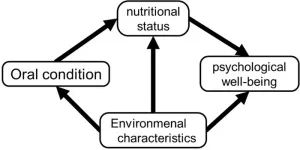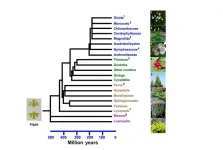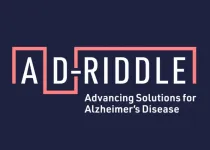(Press-News.org) An observational study found links between prenatal substance exposure and mental health in children 10–12, but also found that controlling for environment and genetics eliminated many associations. Qiang Luo and colleagues analyzed longitudinal data from almost 10,000 participants in the Adolescent Brain Cognitive Development cohort, looking for associations of maternal self-report of prenatal exposure to caffeine, alcohol, tobacco, and marijuana with mental health outcomes from age 10 to 12. Although the authors found many associations between prenatal exposure to the substances studied and neurobehavioral problems, many of these associations diminished when the authors controlled for environment and genetics. Environmental risk factors were captured using metrics such as planned birth, vitamin intake during pregnancy, duration of breastfeeding, premature birth, parental ages at birth, parental partnership, parental education level, family income, and measures of neighborhood safety. Genetic context was established by family history of psychiatric disorders and polygenic risk scores. None of the associations between prenatal exposure to cigarette smoke and outcomes at age 10–12 remained significant after genetics and environment were considered. On the other hand, prenatal exposure to alcohol remained significantly correlated to sleep problems and mental health problems at age 10–12 even after controlling for environment and genetics. In addition, the authors found that contrary to earlier reports of prenatal alcohol exposure correlating with smaller cerebral gray matter volumes in later life, children who has been exposed to alcohol in utero had larger gray matter volumes. According to the authors, the increased gray matter volume, accompanied by low functioning of other brain regions, may reflect a compensatory response of some brain regions coping with the impact of maternal alcohol use.
END
Prenatal substance exposure and childhood mental health
2024-01-30
ELSE PRESS RELEASES FROM THIS DATE:
Gene-based therapy may slow development of life-threatening heart condition
2024-01-30
A new study in mice shows that replacement of a dysfunctional gene could prolong survival in some people with arrhythmogenic right ventricular cardiomyopathy (ARVC), a rare inherited disorder in which the muscular walls of the heart progressively weaken and put patients at risk of dangerous irregular heartbeats.
The investigational treatment targets the loss of function of a gene implicated in many cases of ARVC, plakophilin-2 (PKP2). The PKP2 gene provides instructions for making a protein that holds heart tissues together. When the gene — one of several thought to contribute to the disease —is defective ...
Oral health indirectly influences subjective psychological well-being in older adults
2024-01-30
In humans, oral health influences general health and well-being in many ways. Other than reducing the need for oral rehabilitation later in life, maintaining good oral health reduces the risk of several systemic diseases. Therefore, investing time and effort into improving oral health can be highly beneficial for older adults. However, whether the health benefits of improved oral health extend to psychological domains remains unclear.
Positive psychological well-being is known to positively affect the survival rates of both healthy and unhealthy populations. Thus, to increase life expectancy, it is important to identify the factors associated with ...
Asparagus and orchids are more similar than you think
2024-01-30
What does an asparagus have in common with a vanilla orchid? Not much, if you are just looking at the two plants’ appearances. However, when you look inside - their leaves are more similar than you would think – as revealed by the composition of their cell walls.
By studying plant cell walls – which are to plants what skeletons are to humans – we can reveal the composition of how leaves and stems of plants are actually constructed. This is exactly what a team of University of Copenhagen researchers has done, in a large comprehensive study. In doing so, they have created something truly novel: a large "reference catalogue" ...
DNA particles that mimic viruses hold promise as vaccines
2024-01-30
Using a virus-like delivery particle made from DNA, researchers from MIT and the Ragon Institute of MGH, MIT, and Harvard have created a vaccine that can induce a strong antibody response against SARS-CoV-2.
The vaccine, which has been tested in mice, consists of a DNA scaffold that carries many copies of a viral antigen. This type of vaccine, known as a particulate vaccine, mimics the structure of a virus. Most previous work on particulate vaccines has relied on protein scaffolds, but the proteins used in those vaccines tend to generate an unnecessary immune response that can distract the immune system from the target.
In the mouse study, the researchers found that the ...
Citizen scientists contribute to motor learning research
2024-01-30
A new research study examined the results from data generated by citizen scientists using a simple web-based motor test. The big data approach provides researchers with a unique way to explore how people correct for motor control errors. The resulting insights may one day pave the way for personalized physical therapy or tailor an athlete’s training routine. The results are available in the January 30th issue of the journal Nature Human Behaviour.
“This exploratory approach does not replace lab based studies, but complements ...
New research shows how pollutants from aerosols and river run-off are changing the marine phosphorus cycle in coastal seas
2024-01-30
New research into the marine phosphorus cycle is deepening our understanding of the impact of human activities on ecosystems in coastal seas.
The research, co-led by the University of East Anglia, in partnership with the Sino-UK Joint Research Centre at the Ocean University of China, looked at the impact of aerosols and river run-off on microalgae in the coastal waters of China.
It identified an ‘Anthropogenic Nitrogen Pump’ which changes the phosphorus cycle and therefore likely coastal biodiversity and associated ecosystem services.
In a balanced ecosystem, microalgae, also known as phytoplankton, provide food for a wide ...
How a mouse’s brain bends time
2024-01-30
Life has a challenging tempo. Sometimes, it moves faster or slower than we’d like. Nevertheless, we adapt. We pick up the rhythm of conversations. We keep pace with the crowd walking a city sidewalk.
“There are many instances where we have to do the same action but at different tempos. So the question is, how does the brain do it," says Cold Spring Harbor Laboratory Assistant Professor Arkarup Banerjee.
Now, Banerjee and collaborators have uncovered a new clue that suggests the brain bends our processing of time to suit our ...
Religious people coped better with the Covid-19 pandemic, research suggests
2024-01-30
People of religious faith may have experienced lower levels of unhappiness and stress than secular people during the UK’s Covid-19 lockdowns in 2020 and 2021, according to new University of Cambridge research.
The findings follow a recently published Cambridge-led study suggesting that worsening mental health after experiencing Covid infection – either personally or in those close to you – was also somewhat ameliorated by religious belief. This study looked at the US population during early 2021.
University of Cambridge economists argue ...
IHI launches a new interdisciplinary initiative to revolutionize the way Alzheimer’s disease is detected, diagnosed, prevented, and treated
2024-01-30
Stockholm, January 30, 2024 — Members of the AD-RIDDLE consortium announced today that they will begin a new initiative that aims to bridge the gap between Alzheimer’s research, implementation science, and precision medicine. The AD-RIDDLE programme will offer healthcare professionals a suite of validated solutions for timely detection and diagnosis of Alzheimer’s disease and dementias, to match individuals with the right interventions at the right time, enabling people to better understand what they can do to reduce risk and prevent cognitive decline.
Alzheimer’s disease represents a major public ...
Goats can tell if you are happy or angry by your voice alone
2024-01-30
HONG KONG (18 Jan 2024) — Goats can tell the difference between a happy-sounding human voice and an angry-sounding one, according to research co-led by Professor Alan McElligott, an expert in animal behaviour and welfare at City University of Hong Kong (CityUHK).
The study reveals that goats may have developed a sensitivity to our vocal cues over their long association with humans, according to the study published in Animal Behaviour.
Long known for their own sonorous vocal skills, goats in the study tended to spend longer gazing towards the source of the sound after a change in the valence of a human voice, i.e., when the playback switched from a happier to ...








